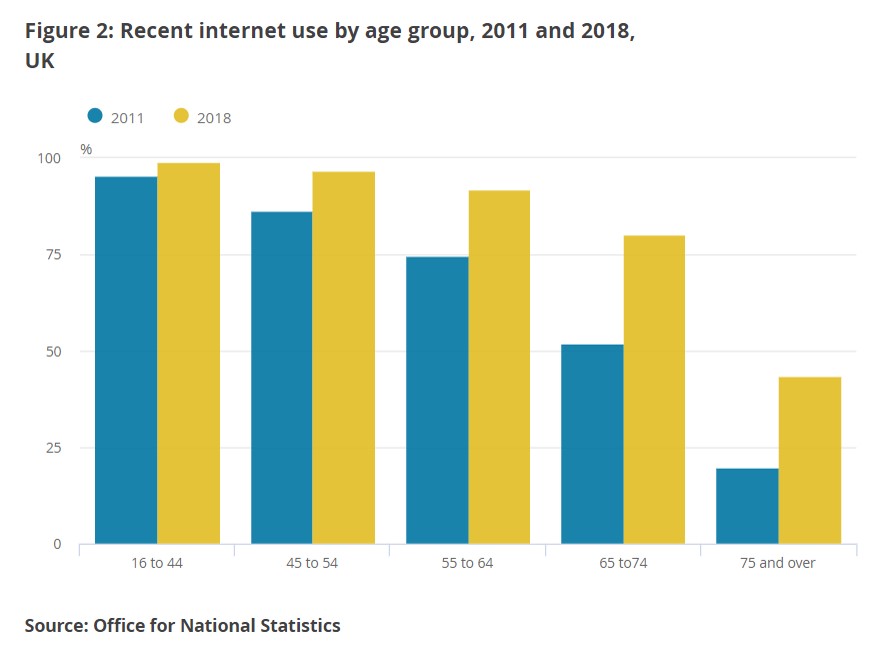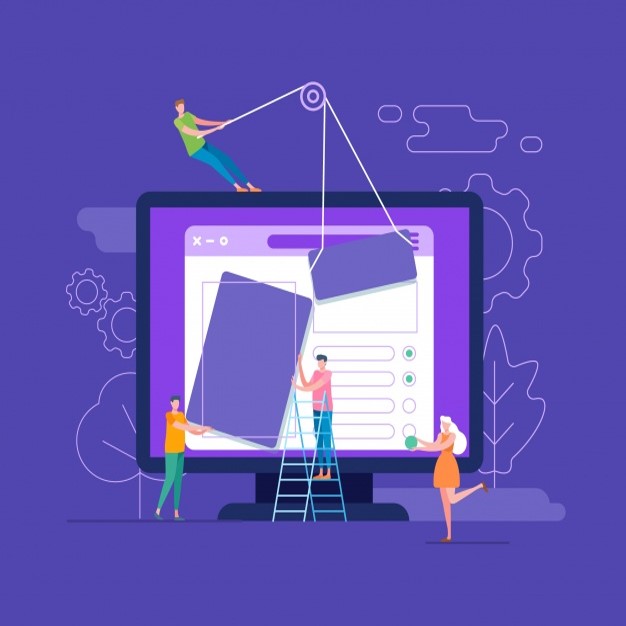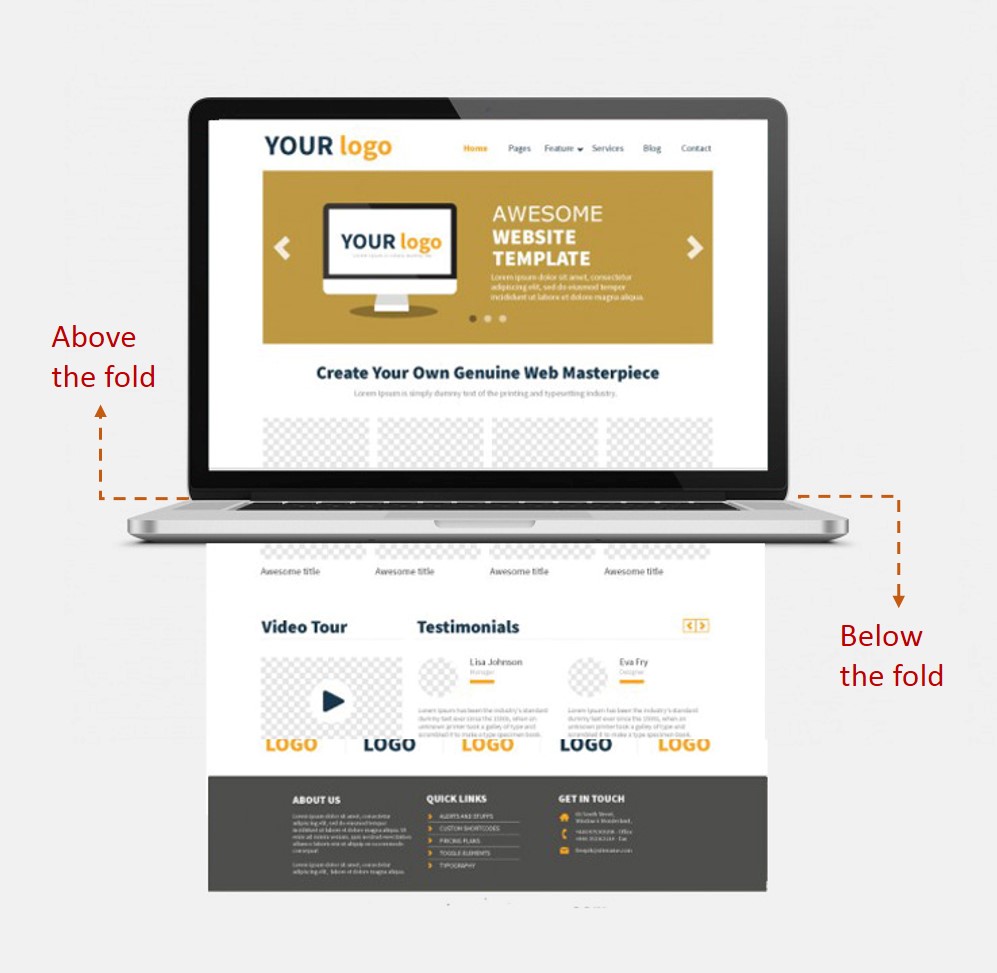Keen to know more
about our Full Service?
Our world class qualitative user testing can help explain the why behind your data and give you the answers to your burning questions.
Ignore The Silver Surfers At Your Peril. This could be the start and finish of a whole Chapter on Web Design for User Experience. Ok, that’s an exaggeration but the point remains – old internet users are on the rise. And rise.
A study recently commissioned by NBN on internet usage amongst Australian grandparents turned out some striking results. Not only did 93% of them use the internet on a daily basis, 72% of them couldn’t imagine their life without it. Driven by the availability of cheap and high speed broadband, these findings are in stark contrast to the hackneyed image of older people as tech dinosaurs.
 And is this a global phenomenon? Well, 2018 data from our cousins over in the UK and their Office for National Statistics drives the point home even more. It suggests the number of over 75s in the UK who use the internet has more than doubled to over 40% this year, from just 19.9% in 2011. Whatsmore, looking at the 65-74 demographic, a whopping 80.2% used the internet in 2018, up significantly from 52% in 2011. Unsurprisingly, the 55-64 age range are online the most often, with 91.8% of them using the internet in 2018.
And is this a global phenomenon? Well, 2018 data from our cousins over in the UK and their Office for National Statistics drives the point home even more. It suggests the number of over 75s in the UK who use the internet has more than doubled to over 40% this year, from just 19.9% in 2011. Whatsmore, looking at the 65-74 demographic, a whopping 80.2% used the internet in 2018, up significantly from 52% in 2011. Unsurprisingly, the 55-64 age range are online the most often, with 91.8% of them using the internet in 2018.
Your Older Users Are an Asset to be Nurtured
It is also vital to remember these user age groups are often the ones with the most of two key, yet finite, resources: money and time. With this in mind, how can we make sure our sites, apps and products are welcoming and accessible to this generation of users? Here are three key pointers to set you off in the right direction:
1) Make Your Information Clear and Easily Digestible
 Our research points to over 55 users putting a lot of stock in clear and easily digestible information. They do not want to have to scroll through long blocks of text or lengthy pages of confusing jargon, so keep your copy clear, simple and to the point. Don’t include too much of it on one page and make sure it is well laid out. Ideally you might want to use a larger and plain font, or include an easy option for making it larger.
Our research points to over 55 users putting a lot of stock in clear and easily digestible information. They do not want to have to scroll through long blocks of text or lengthy pages of confusing jargon, so keep your copy clear, simple and to the point. Don’t include too much of it on one page and make sure it is well laid out. Ideally you might want to use a larger and plain font, or include an easy option for making it larger.
2) Keep Your Key Information Above the Fold

The information above the fold – i.e. what users will see when they open the page and before they scroll down – should contain the key message of what you want to get across on the page. The work we have carried out illustrates that older users will get their grasp of the website’s overall concept from this information, so carefully select what displays there as this will play a critical role in older users’ first impressions and understanding of your website. This also ties in nicely with another finding we observed: older users do not appreciate having to scroll too much to get the information need.
3) Including a Search Bar is a Must
 Old users very much appreciate having an obvious and well placed search tool. Usually lurking around the top right of the page, it’s a fundamental and really shouldn’t be ignored. A search tool can give your older users a quick and easy way to find what they need, or go back to important information they have already seen but since moved past. And through our research we have found they were often more likely to take advantage of it than younger users.
Old users very much appreciate having an obvious and well placed search tool. Usually lurking around the top right of the page, it’s a fundamental and really shouldn’t be ignored. A search tool can give your older users a quick and easy way to find what they need, or go back to important information they have already seen but since moved past. And through our research we have found they were often more likely to take advantage of it than younger users.

In summary: internet use amongst the over 55s is snowballing, and the silver surfers will in all likelihood soon match the younger generations for internet use. Whether your product is aimed primarily at the over 55s, such as retirement properties, or aimed at all ranges, the needs and wants of the over 55s should be factored heavily into your thinking, design and information architecture.
You will be richly rewarded for implementing these factors into your web design and giving your valuable over 55 users a more satisfying and smooth user experience.
For user testing to give you bespoke critical insights and analysis, get in touch with TestMate today.

Our world class qualitative user testing can help explain the why behind your data and give you the answers to your burning questions.